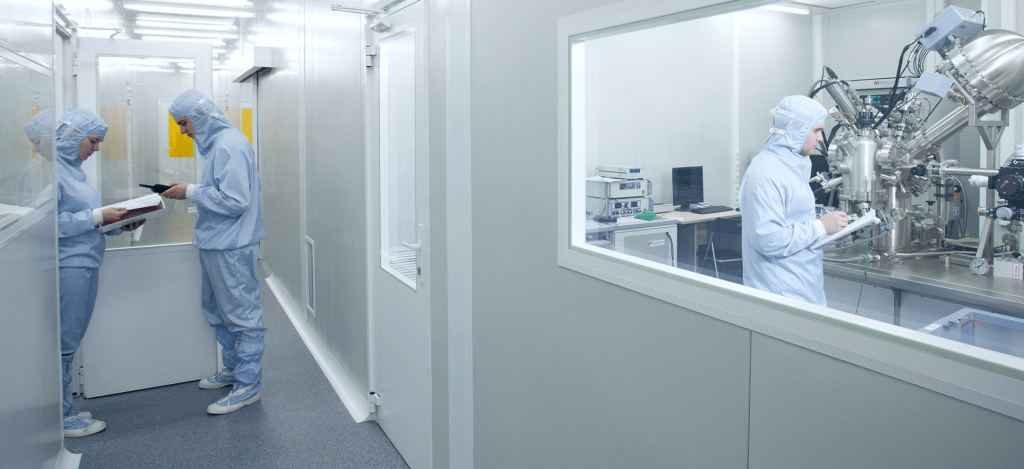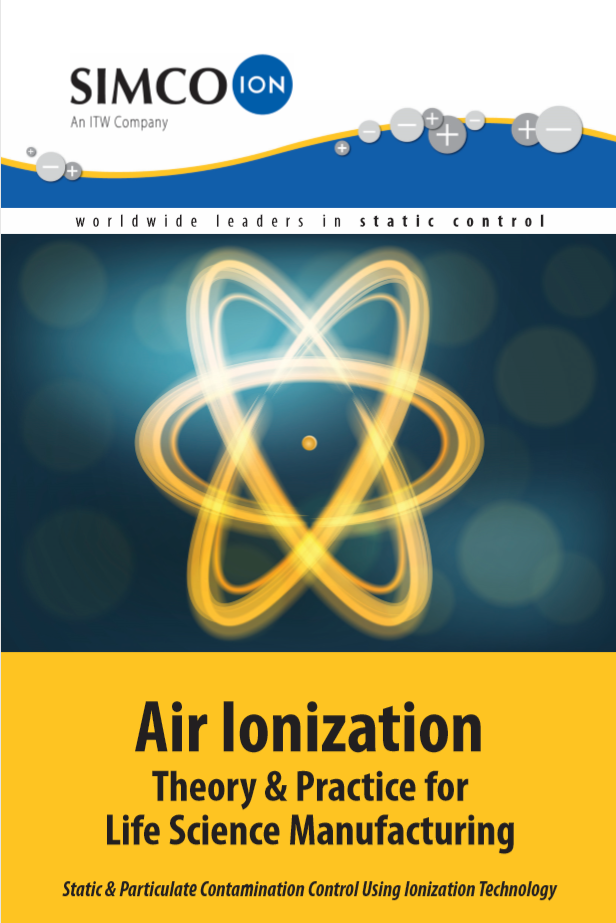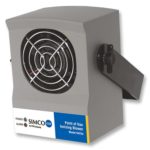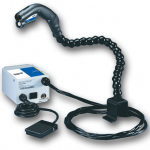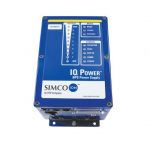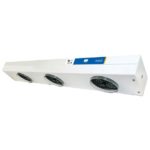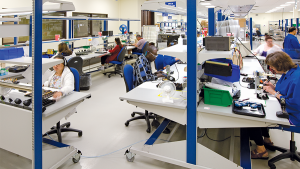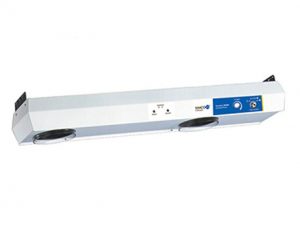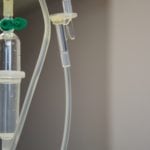Table of Contents
Preventing Electrostatic Discharge (ESD) in Medical Device & Life Science Manufacturing
Static charge has many adverse effects on manufacturing processes, particularly in cleanrooms for sensitive medical devices, electronics, and panel displays. Devices with critical dimensions such as catheters, syringes, web films, tubing, tool covers are very sensitive to electrostatic discharge (ESD). Here we’ll focus on how ESD impacts medical devices in ways that are often not visible until the device is examined under an electron microscope. When a device fails in the field, the cost of repairing and replacing the unit may exceed 100X the cost of having realized the defect during the manufacturing process.
Simco-Ion Guide to Cleanroom Air Ionization & Contamination Control
Our friends at Simco-Ion sent us this brilliant guide to cleanroom ionization and static prevention. Below we’ve provided a short preview. To access the full digital PDF version or print booklet, tell us where to deliver it below.
A Single ESD Event Can Cause Fatal Damage During Medical Device Production
It is well known that ESD causes electronic device failure during the production, packaging and testing processes. For medical device products with critical electronic components, damage during manufacturing from electrostatic forces can introduce metrology errors and latent errors where devices fail with customers once the product is in use.
Since many new products use very sensitive electronic assemblies with active sensors, the possibility of latent failures is growing. As the critical dimensions and tolerances of components and circuits become progressively smaller, they become less tolerant to ESD. In circuits designed to operate at lower and lower voltages, minute levels of charge can result in damage or destroy a device.
ESD Packaging and Material Handling for Medical Devices
Static charge causes difficulty in many materials and can create problems in feeder tools for product assembly and web tools producing medical sheet products. Electrostatically charged components in feeder bowls can lead to stiction (static friction) problems as parts are moved to assembly points in tools. Medical product assembly tools which have feeder bowls are also susceptible to jamming from the buildup of electrostatic charges.
Is Electrostatic Attraction (ESA) Hindering Decontamination in Your Cleanroom Facility?
If a critical product surface becomes charged, the surface attracts airborne particulates in the cleanroom. Regardless of the filtration system, personnel, machinery, and processes can introduce particulates into the air. The ESA affecting these particles is surprisingly strong. Once bonded to a charged surface, it is very difficult to remove the contamination. Cleanroom airflow will not have enough force to remove it. Contamination of this nature is the major contributor to product degradation and rejection in Life Sciences product manufacturing.
What Are the Best Methods of Eliminating ESD and Static-Driven Device Failures in Medical Device Cleanrooms?
It is usually impossible to completely eliminate static electricity from production environments, but with proper use of equipment and remedial procedures, most static problems can be controlled. Many approaches to controlling static charge have been tried over the years. It is clear that no single method exists for controlling all static problems. An important consideration in selecting the proper method is whether the charged material is a conductor or an insulator. Static on a conductor can be easily controlled if the object can be grounded.
What Are the Most Important Considerations for ESD Workstations during Medical Device Packaging and Cleanroom Production?
ESD workstations provide protection with static-dissipative table tops and mats and conductive floors. Materials and devices can be transported in protective bags, bins, and boxes made of conductive or static-dissipative materials. These “passive” procedures cannot always be employed and are subject to human error. Download the PDF to learn about which types of materials are most problematic for static control and explore how ionizers can improve throughput.
Continue Reading: Why Is There No “Antistatic” Substitute for Teflon, Quartz, or Lexan?
The Advantage of Grounded Cleanroom Workstations and ESD Garments
Grounding simply provides a path so that charge can migrate to or from the ground. When a conductor is grounded, all of its charge is neutralized and remains at ground potential. But because the charge does not migrate on insulators, grounding does not work. Grounding an insulator neither removes the charge nor affects the ability of the insulator to become charged. Providing they follow a strict routine, personnel can be grounded through the use of static-dissipative suits, smocks, gloves, and wrist/heel straps.
ESD Workbenches establish a zero-potential ground between the floor/earth, a worksurface, and a user. Conductive ESD-safe surfaces channel, slow down, and shield electrically sensitive devices from defects and device failure. For electronics manufacturing, a work surface resistance point to point is ideal above 1.0 x 106 but below 1.0 x 109.
What Type of Air Ionization Equipment Is Best for Medical Devices and Life Sciences Manufacturing?
All air ionization systems work by flooding the atmosphere with positive and negative ions. When ionized air comes in contact with a charged surface, the charged surface attracts ions of the opposite polarity. As a result, the static electricity that has built up on products, equipment, and surfaces are neutralized. Simco-Ion provides an in-depth explanation of each type of ionization method here.
Continue Reading: What is An Air Ionizer, How Do They Work?
Learn Which Type of Ionization Method is Ideal for Your Facility
- Alternating Current (AC)
- Steady-state DC
- Pulsed DC
- Nuclear
- X-ray
Guardian Cleanroom-Rated Low Balance 2-Fan Overhead Ionizing Blower, 120V
Ionization Within Cleanroom Gowning Rooms
Gowning rooms are the main entry point for contamination entering cleanrooms. Personnel bring contamination from outside the clean room which is then distributed throughout the production facility and onto the exposed product. The transfer will occur between street clothes and smocks or bunny suits when the contamination-laden clothing is in the vicinity of the gowns through the static attraction. An appropriate ionization system in the gowning area can remove upwards of 1 million particles 0.5 um and greater which is then prevented from entering the manufacturing environment.
Air Ionization for Particulate & Contamination Control | Simco-Ion
Practices for Life Science Manufacturing
Within the PDF you’ll find examples and descriptions of each type of ionization technology and how it applies to different industries. Explore case studies, technical information, and static control methods to reduce particle retention and curb ESD events that cause late developing product defects and failures.
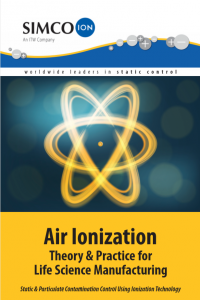
Related Posts
-
Do You Need an ESD Worksurface Mat if Your Workstation Has ESD Laminate?
Answers to Common ESD Questions Such As When Do You Need an ESD Wrist Strap?
-
Do You Need an ESD Chair if You Have an ESD Floormat?
An ESD chair is recommended even when an ESD floor or floormat is in use. The user removing their feet from the floor could cause static generation and discharge. A combination of ESD flooring and…
-
ISO 13485:2016 Medical Devices
ISO 13485 is designed for use throughout the life cycle of a medical device. It supports each stage of medical device development and operation from initial concept to production and disposal. The standard helps internal…
-
Is Linoleum Flooring Conductive or Anti-Static?
Genuine linoleum is a 100% biodegradable material composed of linseed oil, pine resin, cork, wood, pigment, and limestone. Depending on material construction, it is known to have antistatic properties which mitigate some triboelectric charges that…
-
Do You Need an ESD Chair if You Have an ESD Floormat?
An ESD chair is recommended even when an ESD floor or floormat is in use. The user removing their feet from the floor could cause static generation and discharge. A combination of ESD flooring and…
-
Do You Need an ESD Chair if You Have an ESD Floormat?
An ESD chair is recommended even when an ESD floor or floormat is in use. The user removing their feet from the floor could cause static generation and discharge. A combination of ESD flooring and…

